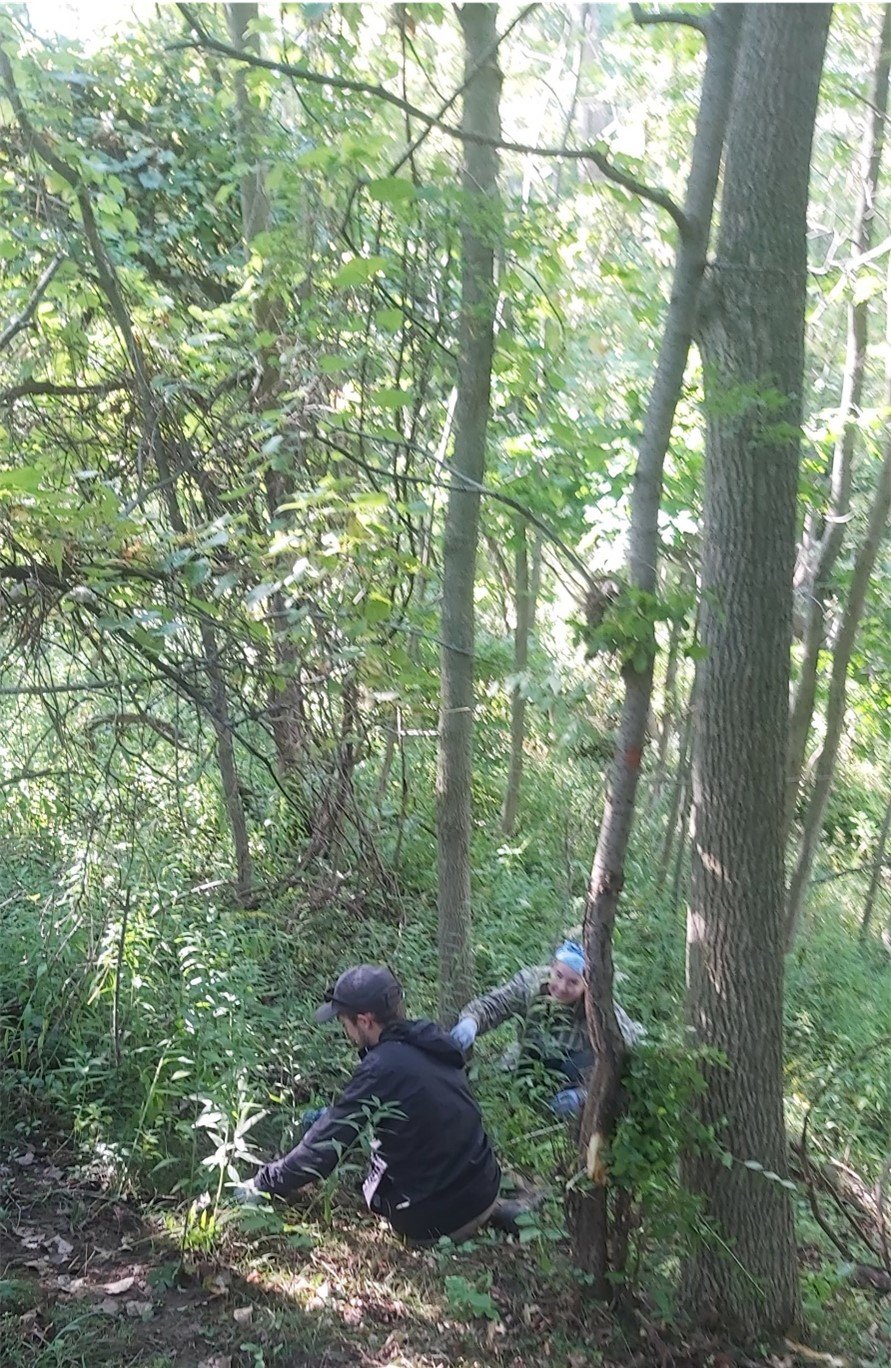Tackling Invasive Species at Royal Botanical Gardens
Royal Botanical Gardens
By Joanne Hamilton, Ecocorridors RBG Lead
18 October, 2023
A walk in the forest at Royal Botanical Gardens (RBG) showcases more than just ‘nature’. If you look closely at the plants, they begin to fascinate you; individual species emerge from the tangle and soon you will see the subtle beauty the forest has to offer. Bark transforms from simple brown to a multitude of shades and unique textures. Leaves and stems split into dozens of colours, from reds, purples, and oranges to dozens of shades of greens, all with different shapes, sizes, and textures. Thousands of plant species are present at RBG all with a unique appearance and survival strategy.
RBG Invasive Species Technician, Michael, removing invasive Honeysuckle from the interior forest. Photo by Sarah Giles.
RBG is a biodiversity hotspot, with Carolinian forests meeting mixed upland deciduous. North slopes and south slopes hold different species, and across the property from the Escarpment at Rock Chapel to the grasslands of Princess Point, dozens of rare plant species call RBG home. This system allows animals of all kinds, to forage, breed, and thrive in the protected Nature Sanctuaries at RBG, from the Monarch Butterfly to the White-tailed Deer.
All of this ecological beauty is under threat from invasive species.
Invasive species are a global problem, impacting ecosystems and threatening biodiversity worldwide. These plants are often transported across continents and oceans, either willingly or accidentally, establishing themselves in new lands. These species lack natural control systems and find the conditions of their new home to be perfect to reproduce and spread. What was a diverse mix of texture, shape, and colour, transforms into a monoculture of repeating patterns. This loss of biodiversity reduces available habitat for many animal species, and threatens the already rare plants and ecosystems.
At RBG, Invasive Species Technicians are hired each fall to tackle this enormous problem. With funding from the Parks Canada Ecological Corridor Pilot Project, a large team has been hired to help tackle invasives in our most sensitive forests, grasslands, and floodplains. Already thousands of plants have been manually removed, giving native plants a chance to recover.
In addition to invasive species removal, technicians will also be installing wildlife mitigation fencing; barriers to prevent vulnerable animals such as turtles, frogs, and small mammals, from crossing busy roads. These fencing projects will reduce road mortality for these species and allow animals to safely access habitat without having to cross the street. The fence used will be Animex™ 48, a plastic fencing that lasts between 5-15 years, longer when supported by other structures such as chain link fencing or guardrails. RBG has already installed Animex™ fencing and seen great success in reduced road mortality.
If you would like to assist with invasive species removal at RBG, volunteer events will be running each Saturday in November. To sign up as an RBG volunteer please go to https://www.rbg.ca/volunteer/ These events are a great way to learn more about invasive species, meet people passionate about protecting the environment, and help protect natural areas!
RBG Invasive Species Technicians, Christa and Michael, removing Common Buckthorn seedlings. Photo by Sarah Giles.


